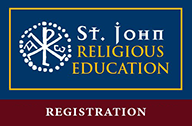Bulletins
February 21, 2016
Download the Bulletin as a PDFPope Benedict’s reflection on the active participation in Sacramentum Caritatis begins with these observations:
52. The Second Vatican Council rightly emphasized the active, full and fruitful participation of the entire People of God in the eucharistic celebration. Certainly, the renewal carried out in these past decades has made considerable progress towards fulfilling the wishes of the Council Fathers. Yet we must not overlook the fact that some misunderstanding has occasionally arisen concerning the precise meaning of this participation. It should be made clear that the word “participation” does not refer to mere external activity during the celebration. In fact, the active participation called for by the Council must be understood in more substantial terms, on the basis of a greater awareness of the mystery being celebrated and its relationship to daily life. The conciliar Constitution Sacrosanctum Concilium encouraged the faithful to take part in the eucharistic liturgy not “as strangers or silent spectators,” but as participants “in the sacred action, conscious of what they are doing, actively and devoutly”. This exhortation has lost none of its force. The Council went on to say that the faithful “should be instructed by God’s word, and nourished at the table of the Lord’s Body. They should give thanks to God. Offering the immaculate Victim, not only through the hands of the priest but also together with him, they should learn to make an offering of themselves. Through Christ, the Mediator, they should be drawn day by day into ever more perfect union with God and each other”.
53. The beauty and the harmony of the liturgy find eloquent expression in the order by which everyone is called to participate actively. This entails an acknowledgment of the distinct hierarchical roles involved in the celebration. It is helpful to recall that active participation is not per se equivalent to the exercise of a specific ministry. The active participation of the laity does not benefit from the confusion arising from an inability to distinguish, within the Church's communion, the different functions proper to each one. There is a particular need for clarity with regard to the specific functions of the priest. He alone, and no other, as the tradition of the Church attests, presides over the entire eucharistic celebration, from the initial greeting to the final blessing. In virtue of his reception of Holy Orders, he represents Jesus Christ, the head of the Church, and, in a specific way, also the Church herself.
To be continued...
God bless you.
Fr. Christopher J. Pollard



